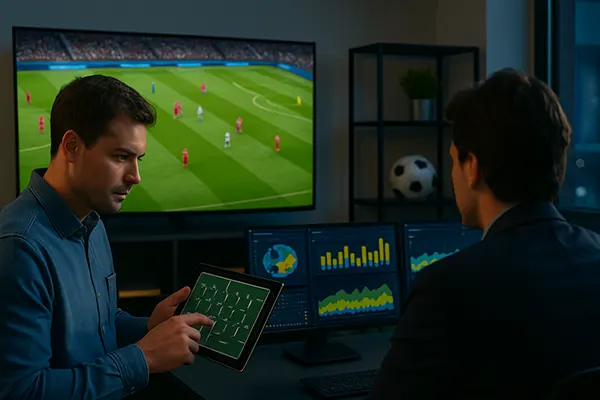
Analytics of Betting: How Team Performance Changes in the Second Half
The second half of a football match is often decisive for both players and analysts, as it reveals how teams adapt to tactical changes, fatigue, and psychological pressure. Understanding these factors is vital for anyone studying betting trends, since performance shifts after half-time can significantly influence outcomes and market odds.
Key Factors Influencing Second-Half Performance
One of the main reasons teams change their performance in the second half is the adjustment of tactics. Coaches frequently alter formation or introduce substitutions to counter the opponent’s strengths. These strategic moves can completely shift the balance of the game, making the second half more unpredictable than the first.
Physical endurance plays another crucial role. While elite clubs invest heavily in conditioning, even the best-prepared squads experience performance drops after 60 minutes. This is when defensive mistakes, reduced pressing intensity, or slower reactions become visible, providing openings for late goals.
Psychological resilience is equally important. Teams under pressure often show contrasting behaviour: some rise to the challenge, while others collapse. Matches in 2024–2025 statistics reveal that teams trailing by one goal at half-time equalised in 32% of games across major European leagues, highlighting the mental aspect of the sport.
The Role of Substitutions and Tactical Flexibility
Substitutions introduced in the second half frequently alter momentum. Fresh players add energy, pace, or creativity, making them decisive against fatigued defenders. For example, Manchester City and Real Madrid have both relied heavily on impactful second-half substitutes during the 2024/25 season.
Tactical flexibility also matters. Clubs capable of switching from defensive setups to aggressive pressing can reverse outcomes late in the match. Teams such as Liverpool and Bayer Leverkusen have demonstrated this adaptability, often scoring multiple goals in the final 20 minutes.
For betting analysis, understanding how different managers use their bench is critical. Punters increasingly study substitution patterns to predict late match trends, especially in live betting markets.
Statistical Patterns in the Second Half
Recent analytics show a clear rise in goal frequency after half-time. Data from UEFA competitions in 2024 indicate that 56% of goals were scored in the second half, with the highest concentration between the 70th and 85th minutes. This reflects both fatigue and tactical risk-taking as teams push for results.
Late penalties and set pieces are more common due to increased defensive errors. According to Opta statistics, 41% of all penalties in the top five European leagues during the 2024/25 season occurred after the 60th minute. This highlights how betting on late goals or penalty scenarios is strongly supported by data.
Another emerging pattern is the difference between home and away teams. Home sides tend to push harder in the final stages, benefiting from crowd support, while away teams often conserve energy, leading to late swings in results.
Impact of Fitness Levels and Match Intensity
Fitness has become a measurable indicator of second-half performance. Wearable technology and advanced analytics now allow clubs to track player fatigue in real time, and betting models are starting to integrate these figures into predictive systems.
High-intensity pressing teams such as Barcelona or RB Leipzig often experience performance dips after 70 minutes, leaving gaps for opponents. This knowledge helps analysts forecast late counter-attack opportunities.
Conversely, clubs with deeper squads like Paris Saint-Germain can maintain pressure throughout the full 90 minutes. Bettors need to distinguish between clubs with limited depth and those capable of sustaining tempo until the final whistle.

How Analytics Shapes Modern Betting Strategies
The growing influence of advanced statistics means betting strategies are no longer based solely on intuition. Analysts now examine detailed second-half performance metrics such as possession changes, pressing intensity, and substitution impact when evaluating live markets.
Machine learning models, trained on thousands of games, increasingly predict probability shifts after half-time. For example, models developed by betting research groups in 2025 can forecast the likelihood of a comeback with accuracy rates exceeding 70% when factoring in second-half patterns.
This shift towards data-driven decision-making makes the betting landscape more competitive. Those who rely purely on traditional intuition risk losing out to those who integrate analytics into their strategies.
The Future of Second-Half Betting Insights
As technology advances, the ability to interpret in-game statistics in real time will expand. Live data feeds from GPS trackers, biometric sensors, and AI-powered video analysis will offer punters deeper insights into second-half dynamics.
In the near future, analysts expect predictive models to include psychological markers such as stress levels and concentration lapses. This would make betting markets even more precise and responsive to the smallest changes in team performance.
Ultimately, the second half will remain the most unpredictable yet most valuable period for betting analysis. With the right use of data, punters can anticipate turning points more effectively, aligning betting strategies with real-time developments.
